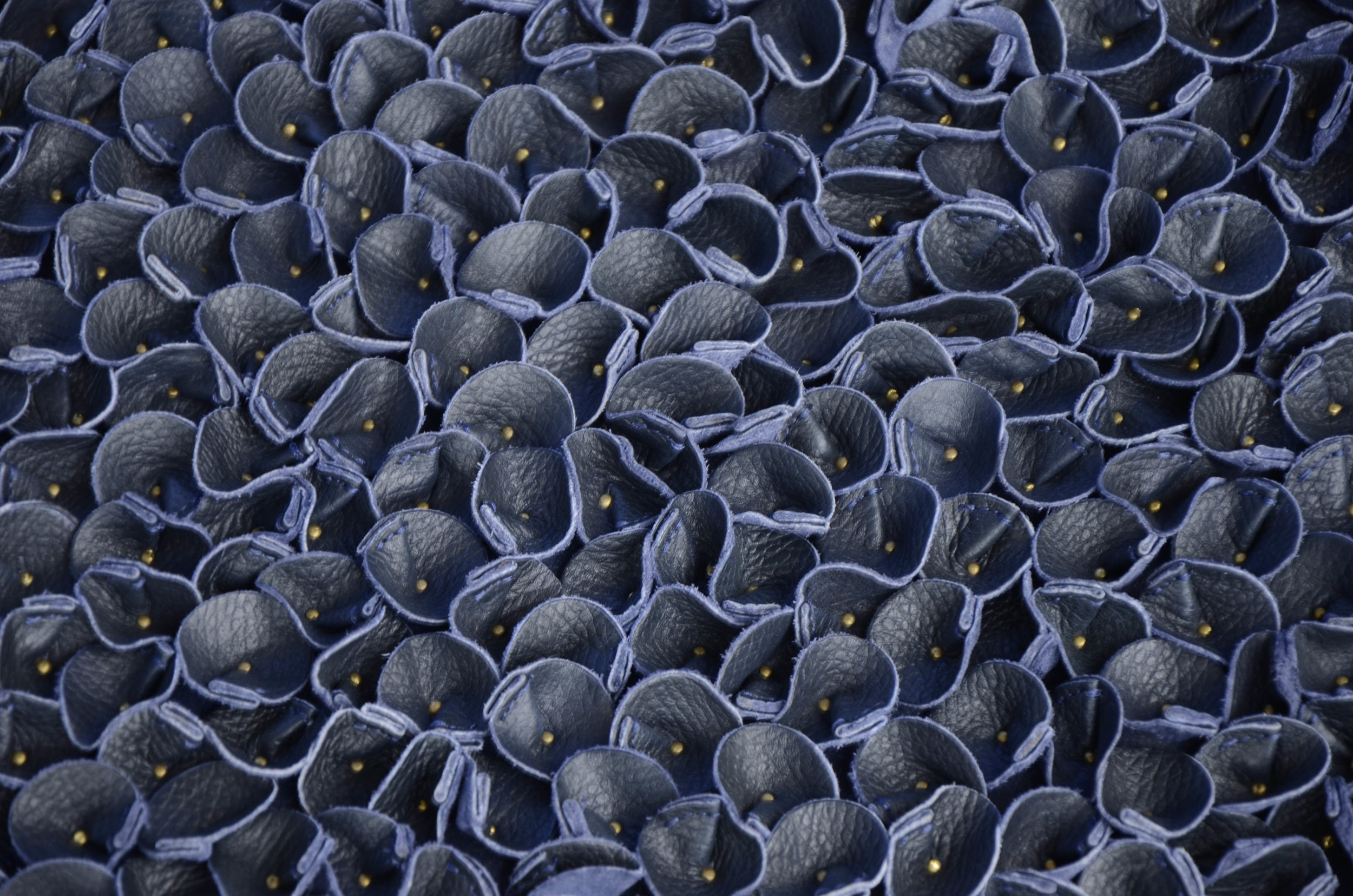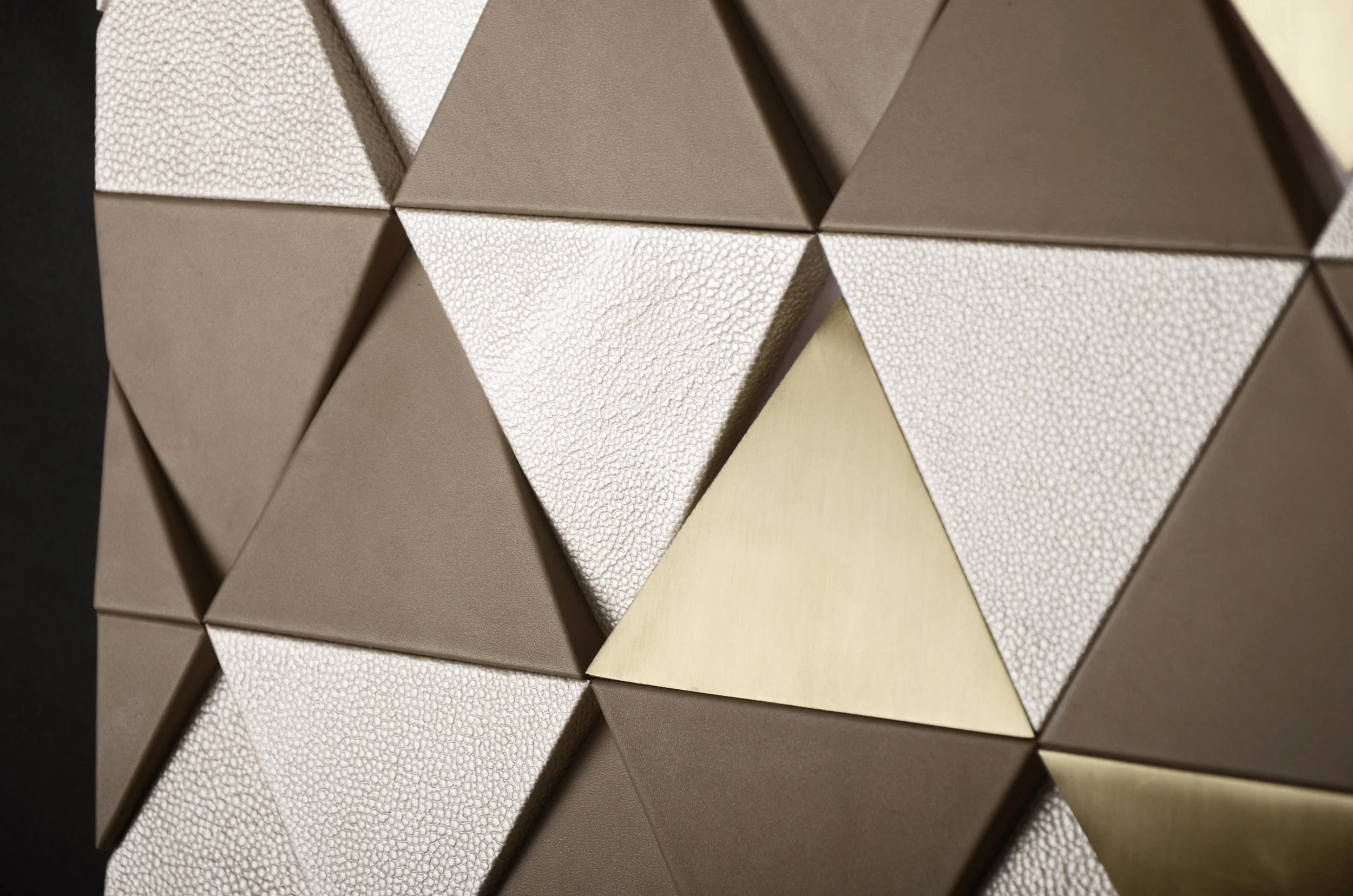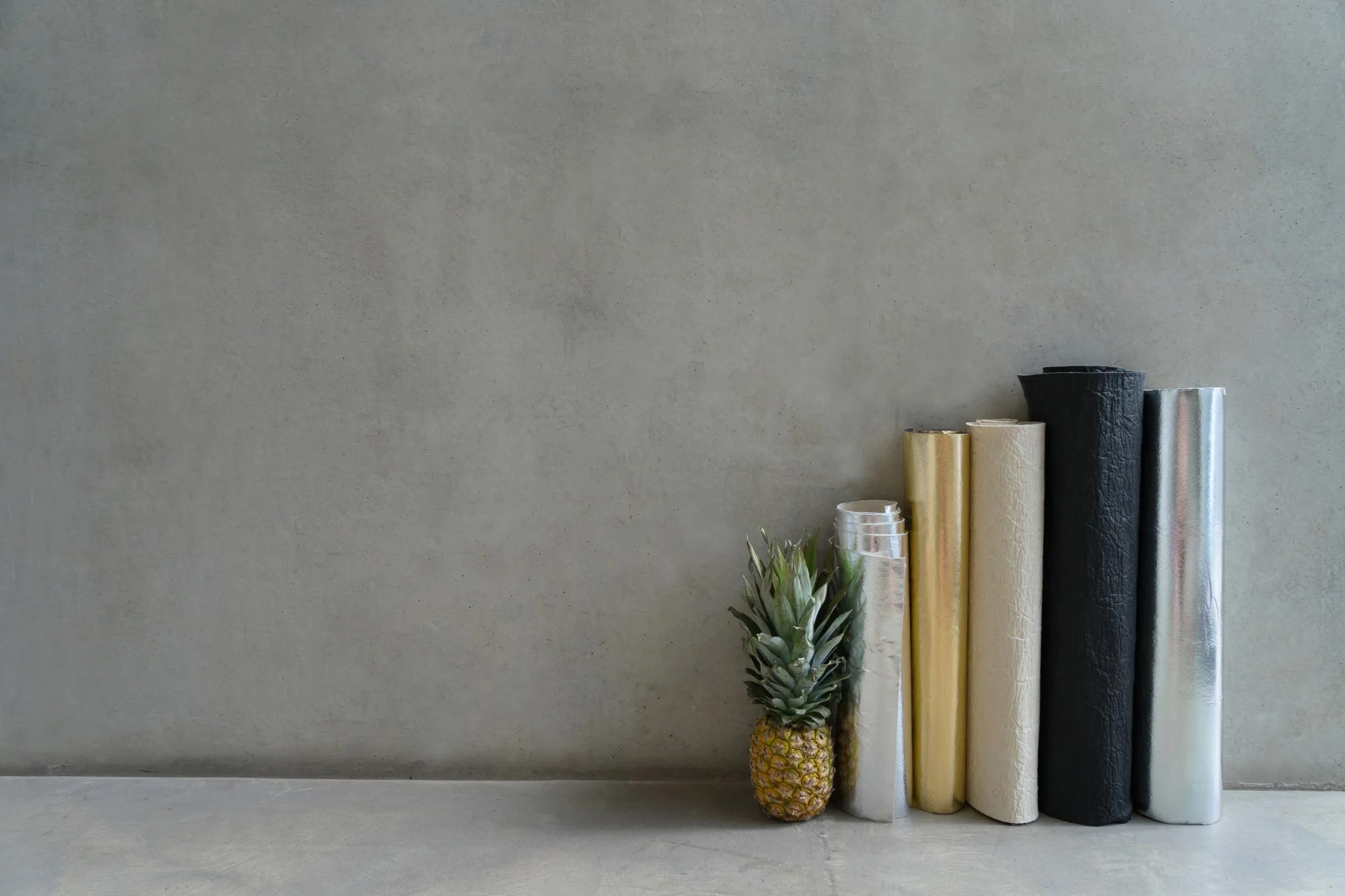Leather under wraps
Whilst it may now be seen as relatively primitive and to some, even barbaric, the decision of the first Homo Sapiens to try and utilise the hide of animals, for which they had reared and slaughtered for meat, was a pivotal moment in the development of our species. The ability to test out and ultimately discover the right processes to transform the properties of hide, turning it into a thoroughly functional material was a giant step forward; such is incredible power of the, albeit it slightly macabre, human imagination.
Bill Amberg x Faye Toogood
Traditionally, the skins of large native mammals such as cows, pigs, goats and kangaroos (depending on which part of the world you’re in) are used to make leather, although at present it is estimated that cattle hides contribute to around 60-70% of worldwide leather production. Tanning is the key process in altering hides to form the leathers that we come into contact with as footwear, clothing, furniture and in automobiles. It’s a method of soaking the stripped hides in a tanning ‘liquor’ which penetrates the material and stabilizes the proteins to stave off putrefaction. Whilst early adopters of the material would have used vegetable based substances, including tree bark, chrome sulphates have been in use since the mid-nineteenth century, although not exclusively. That said, the production of leather is still labour intensive and not without some sizeable issues including the possibility of chemical pollution, excessive water usage as well as the side affects that cattle rearing has upon the ozone.
Yet leather remains a mainstay, such are the unique properties and aforementioned array of applications of the material. Flexibility, durability, resistance to abrasion and the ability to dye it tick a number of functional boxes, whilst associations of ‘luxury’ have formed and become firmly established over time, perhaps even because of the sacrifice of living creatures carried out in the process of making it. And whilst we’re more accustomed to seeing leather clad the backs of bikers and adorn sofas and chairs in interior spaces, the adaptability and unique aesthetic properties of the material make it a staple of interior design.
Leather in Bill Amberg’s studio
Here in the UK there are few designers that know leather better than Bill Amberg, as we found during our recent interview with him. Having established his studio some 30 years ago his name has become synonymous with high quality bespoke leather products, furniture and interior surfaces. His team reflects the many craft industries for which leather is a fundamental material, with experienced crafts people from extensive backgrounds in saddlery, case making, book binding and leather craft all working for the studio. As we found in our recent interview with Bill, the studio has also developed innovative digital printing techniques, which they launched this year with design collaborations with the likes of Natasha Baradaran, Faye Toogood and Tom Dixon.
Pintark
Over in India Parminder Pal Singh has been working for over 20 years in what can be called the luxury end of the interiors market. Using this experience and the knowledge that comes with it he set-up interior surface brand Pintark in 2013, with a UK launch following in 2016. Much like Bill Amberg, the studio prides itself on creating highly crafted and beautifully designed surface panels, most notably in leather. Once again, experienced craft is at the heart of the studio’s manufacturing, with skilled makers carrying out much of the work by hand, be it cutting, stitching or weaving. Often created in a modular format, the leather tiles can be delightfully contrasted with other materials such as brass and timber whilst embossing takes advantage of the pliable nature of leather in creating indented pattern and rich texture.
Pintark
As well as working with leather straight from the tannery there are also designers and brands that are looking at alternative options. The aim is to achieve many of the same positive attributes whilst forgoing the need to kill animals whilst reducing, or at least altering, the more damaging elements of the manufacturing process.
Buxkin
One such brand is Buxkin, whom we highlighted last month for their clever recycling of wool in producing innovative ribbed acoustic panels. The same, or at least very similar processes are also applied to leather, with waste material being shredded and reconstituted into a new formable and flexible constituent with similar durability as regular leather.
Piantex
Ananas Anam go one considerable step further in bypassing the use of animal skin altogether in the creation of their entirely sustainable leather. Skin is most definitely used, but it is that of the everyday pineapple that they use in producing Piñatex.
Pinatex
After seven years of research and development leathergoods expert Dr Carmen Hijosa has fine-tuned a manufacturing process that transforms the waste leaves, a by-product of pineapple harvesting, by extracting the long fibres and creating a non-woven mesh that is treated to create a textile that serves as a suitable alternative to leather.
Marlene Huissoud
French designer Marlène Huissoud’s entire practice is centred around discovering new ways of converting substances found in nature into new useful materials, not least as an alternative to leather. Much like the process involved in making Piñatex, Huissoud’s ‘Wooden Leather’ involves a non-woven mesh and a surface coasting but in this case it’s fibres extracted from silkworm cocoons and a varnish derived from bee propolis, making the leathery material an entirely bio-based substitute for hide-based leather.
Will there ever come an end to leather derived from animals, and specifically mass-farmed livestock? Can sustainable alternatives leapfrog the hide and leather industry? Perhaps in the future artisans and skilled crafts people will be working almost entirely with bio-based leathers but whatever the case, humans are sure to seek out the unique characteristics and sumptuous aesthetic that make leather the everyday material it has always been.
This article was originally published by Design Insider Live








